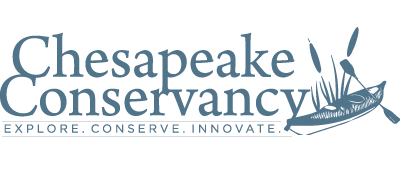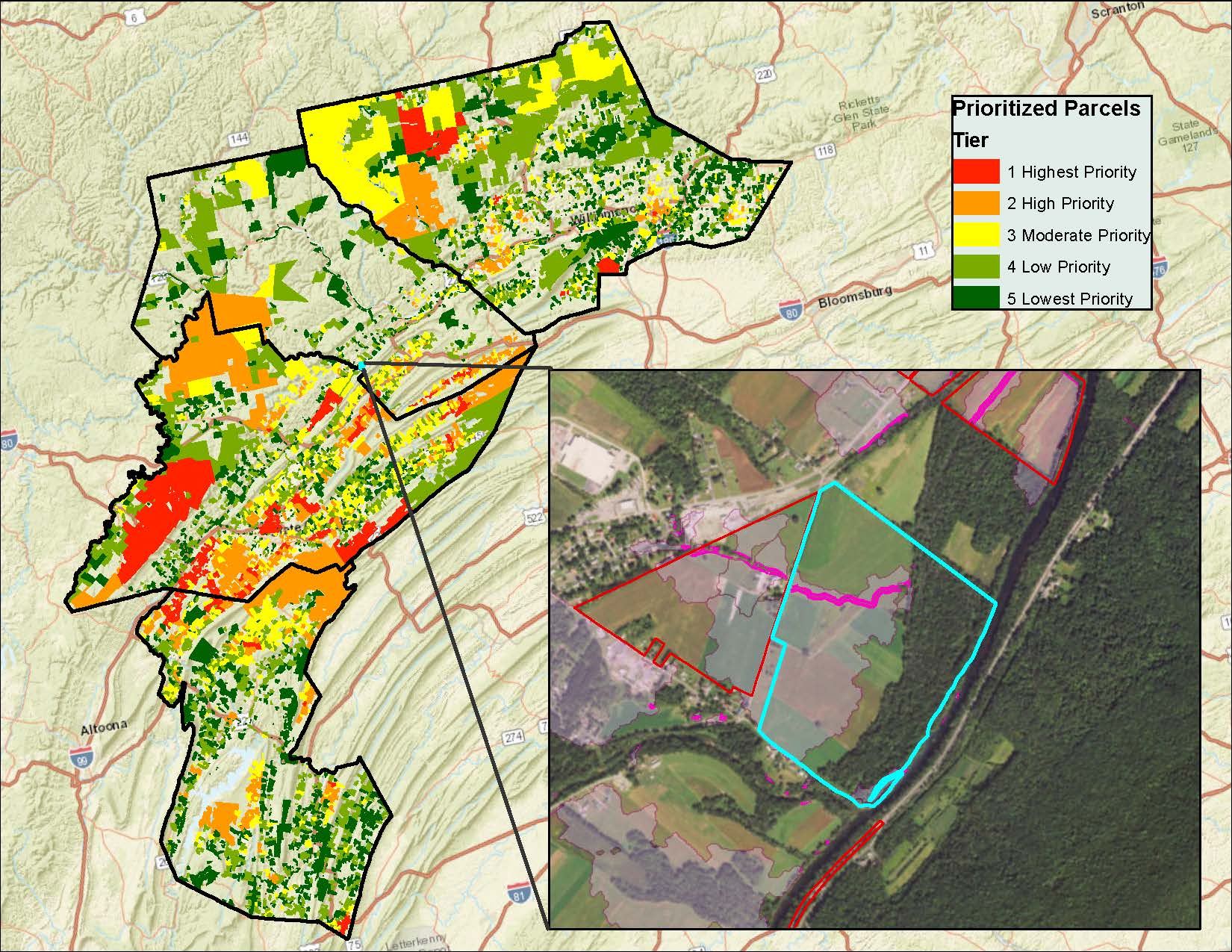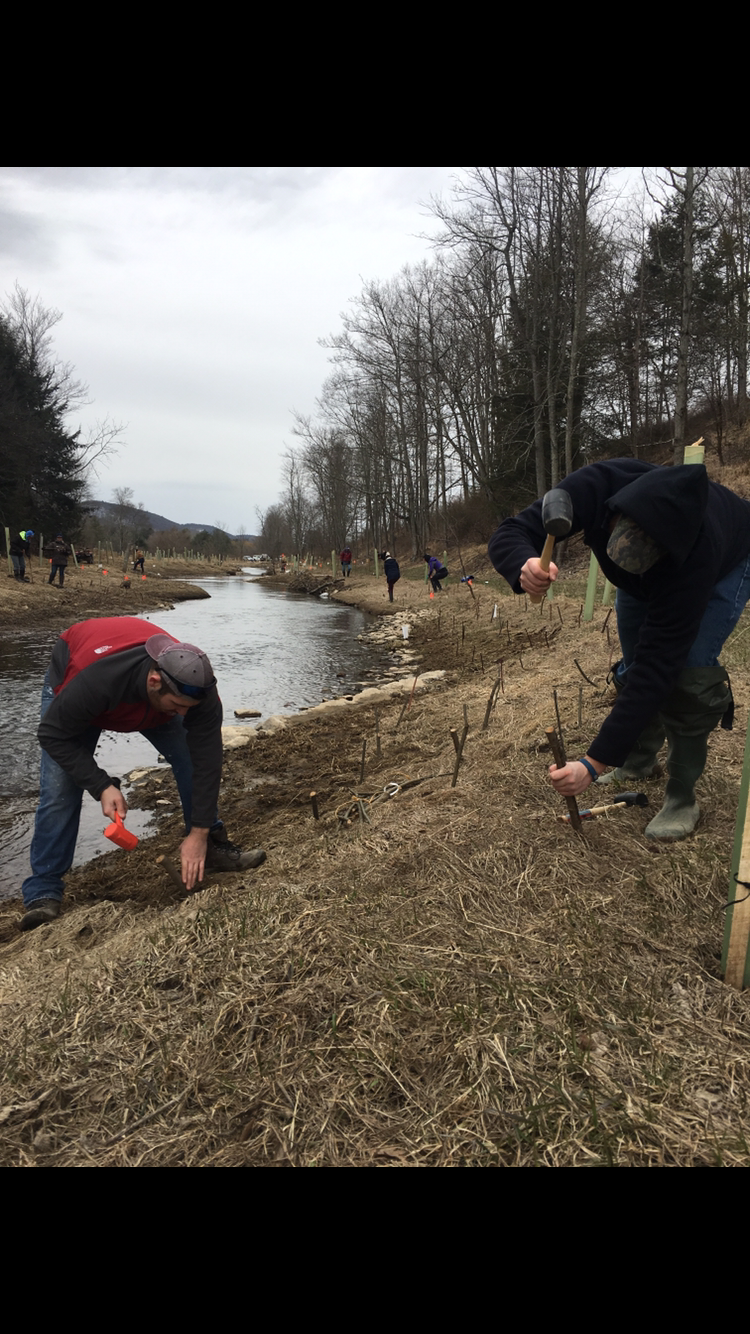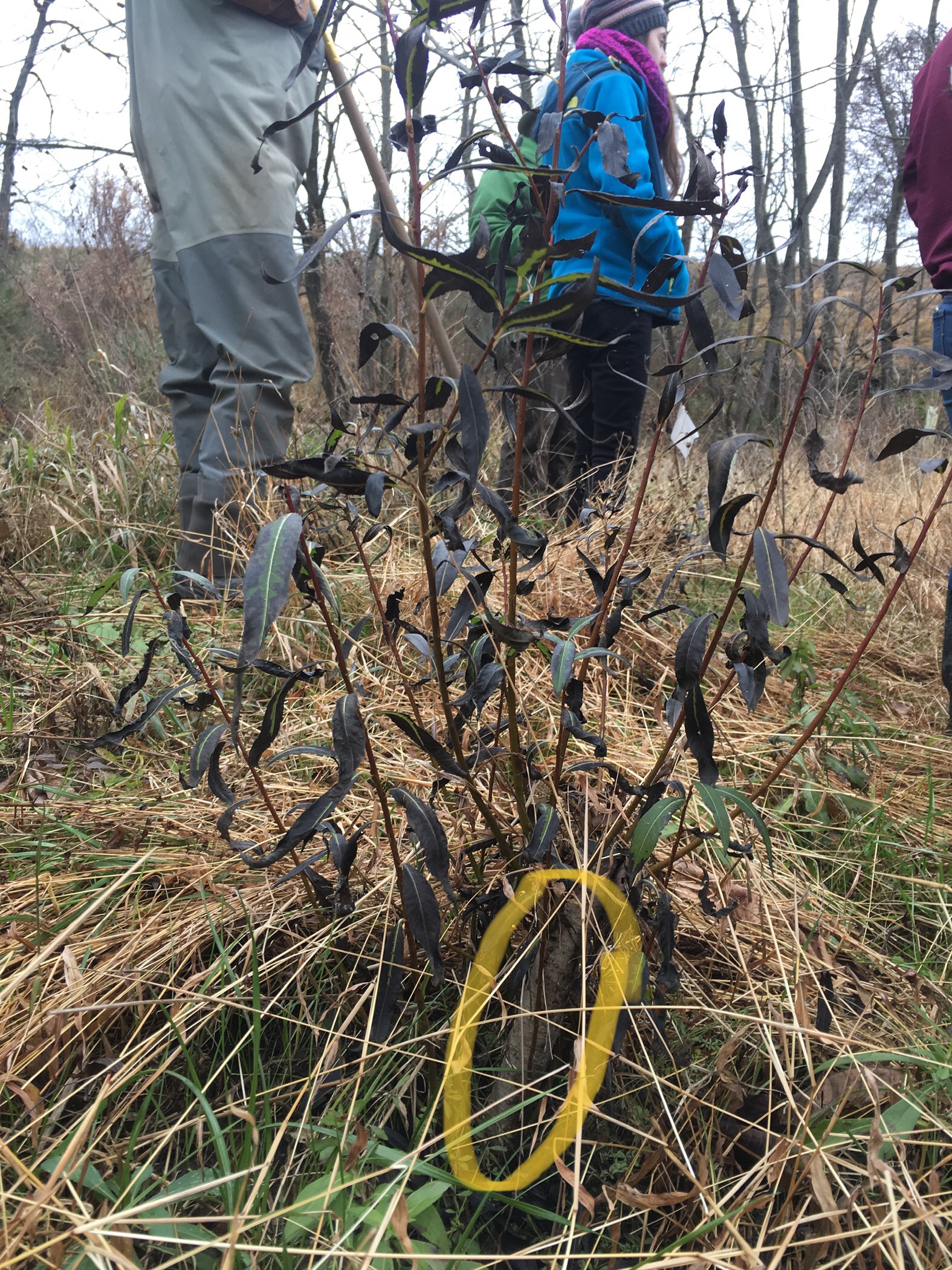Precision Conservation in the Susquehanna River
The Chesapeake Conservancy’s “Implementing Precision Conservation in the Susquehanna River” project has the clear goal of taking a new, data-driven methodology of water restoration called “precision conservation” and making this methodology the standard practice for efficient and cost-effective water restoration in the Susquehanna River watershed. This project is part of the Conservancy’s Envision the Susquehanna (ETS) initiative. The Conservancy launched the ETS initiative in 2013 to build support for collective action to protect the Susquehanna watershed and resources like trout habitat.
The Organization
The Chesapeake Conservancy was established in 2006 as the Friends of the John Smith Trail to support the designation and implementation of the National Park Service’s Captain John Smith Chesapeake National Historic Trail (Chesapeake Trail). Today the Chesapeake Trail has become the framework for conservation initiatives and an important natural resource protection tool that provides the Conservancy and its partners with a shared context for large landscape conservation and habitat restoration in the Susquehanna River watershed and across the Chesapeake Bay watershed.
The Chesapeake Conservancy strives to achieve a healthier Chesapeake Bay watershed by connecting people with its wildlife and history, conserving landscapes and rivers, and restoring its natural resources. The Conservancy has proven an important convener, serving as a catalyst for new initiatives and partnerships across the watershed. In addition, the Conservancy has become a leader in producing new data and analyses to advance conservation and restoration. Our nationally known Conservation Innovation Center (CIC) incubated at the Chesapeake Conservancy helps local nonprofits unlock the power of technology to better support their conservation goals. The CIC developed one of the largest high-resolution land cover datasets in the nation covering 100,000 square miles and encompassing all counties touching the Chesapeake Bay watershed. As a result, Microsoft’s AI for the Earth featured the Conservancy’s precision conservation work in a promotional video.
The Conservancy complements this data-rich approach with intensive community engagement to pair data with local priorities and accelerate impact on the ground with initiatives like Envision the Susquehanna (ETS). This grant will support an ETS pilot project in Huntingdon, Centre, Clinton, and Lycoming Counties that truly represents a new era of conservation.
In addition to the ETS initiative, the Chesapeake Conservancy has a number of highly impactful programs that it continues to work on, including:
• Envision the James: Develop a region-wide analysis of restoration opportunities throughout Virginia’s James River watershed that will inform how $15 million of future mitigation and settlement dollars will be spent to deliver great water quality benefits.
• Envision the Choptank: Reduce nutrient pollution and enhance oyster habitat working with 14 different partners to achieve shared goals and ownership in the Choptank River watershed.
• Getting People Inspired to Get Outside: The Conservancy boosts outdoor recreational experiences by providing the public with trip ideas, insights, and new opportunities to explore the outdoors through www.findyourchesapeake.com, the Paddle the Potomac, and a new Paddle the Susquehanna site.
• Mallows Bay-Potomac River: This proposed new National Marine Sanctuary has ecological importance as one of the largest ghostship fleets in the Western Hemisphere that has transformed into a wildlife sanctuary. The Conservancy has worked to raise the profile of this site.
In addition, the Conservancy has worked to achieve important conservation goals through strategic advocacy that reflect the commitment of the organization and its conservation partners throughout the Chesapeake Bay watershed, including:
• Establishment of
o The John Smith Chesapeake Trail
o Fort Monroe National Monument at the mouth of the James River, and Werowocomoco, Native American seat of power on the York River in Virginia.
• Expansion of
o The Blackwater National Wildlife Refuge, and strategic conservation of private lands along the Nanticoke River, part of the Middle Chesapeake Sentinel Landscape.
• Secured state and Federal land conservation funding for the Chesapeake Bay through the
o Rivers of the Chesapeake Collaborative Land and Water Conservation Fund (LWCF) proposals and
o Ongoing collaborative work to protect Maryland’s Program Open Space from budgetary diversion.
The Project
The Chesapeake Conservancy’s “Implementing Precision Conservation in the Susquehanna River” project has the clear goal of taking a new, data-driven methodology of water restoration called “precision conservation” and making this methodology the standard practice for efficient and cost-effective water restoration in the Susquehanna River watershed. This project is part of the Conservancy’s Envision the Susquehanna (ETS) initiative. The Conservancy launched the ETS initiative in 2013 to build support for collective action to protect the Susquehanna watershed and resources like trout habitat. The Conservancy is seeking funding from New Pig to support “Implementing Precision Conservation in the Susquehanna River” to continue water restoration project implementation, pre- and post-implementation monitoring, and community engagement with the precision conservation methodology.
The Chesapeake Conservancy has been working with individuals, community leaders and organizations based in the Susquehanna River watershed to describe their vision for the watershed. After a three-year community input process, the Vision for the Susquehanna River Watershed document was completed, propelling conservation opportunities throughout the Susquehanna. To achieve identified community objectives, the Conservancy developed high-resolution land cover datasets and flow path maps to facilitate parcel-level decision making for conservation efforts. This approach will dramatically expand the effectiveness and affordability of habitat restoration by getting the right projects in the right places.
To demonstrate the recommendations outlined in the Vision document, the Conservancy carried out two projects in 2016 and attracted seed funding in September 2016 from the National Fish and Wildlife Foundation (NFWF) for the launch of our newest initiative in the Susquehanna. This initiative is focused on the four-county region of Centre, Clinton, Lycoming and Huntingdon Counties in Pennsylvania. Within this region, we have been working with local stakeholders to determine what their priorities are for restoration, and then we work to address those priorities using the best available data.
For example, through a series of stakeholder meetings, the Conservancy and its ETS partners found that stakeholders in the middle Susquehanna River watershed envision a Susquehanna where the River and its tributaries provide prime trout fishing opportunities in the long term. Additionally, a 1000-resident phone survey carried out for ETS found that in this part of the watershed, 22% of respondents went fishing more than 10 times in the past year. These common goals can focus stakeholders in the region and appeal to a broader audience of agricultural landowners than has been reached through traditional outreach strategies. By delivering parcel-specific geospatial and in-stream fish habitat data, the Conservancy and our project partners are coordinating the prioritization and implementation of the highest value projects in the watershed. Through this method of getting the right practices in the right places, we aim to accelerate the pace of conservation and restoration in the watershed.
The Chesapeake Conservancy plans to coordinate implementation and post-implementation monitoring of new riparian buffer projects in Centre and Clinton Counties that will help protect local fisheries. In addition, our team will calculate the acres of upstream agricultural land treated by each project, and the corresponding nutrient and sediment reductions in order to determine the extent to which pollution reductions can be more cost-effectively achieved through targeted BMP implementation. This project implementation supports the larger goals of the NFWF grant which are to implement this precision conservation strategy throughout the Susquehanna River watershed.
Based on methodologies developed in partnership with Trout Unlimited in the Kettle Creek watershed, for example, the Conservancy has identified existing stream conditions that indicate a need for restoration, and coupled those with trout habitat suitability and prediction models to prioritize locations where trout populations are likely to rebound. Remotely sensed-data can identify steep, eroding stream banks and presence of barriers to fish passage like culverts and drop-offs as locations that need restoration. In addition, brook trout suitability models produced by the North Atlantic Landscape Conservation Cooperative and predictive models created by Susquehanna University can indicate where and by how much trout populations would be expected to respond to different restoration scenarios.
The Conservancy and its partners have now selected 7 locations to monitor in-stream conditions where our local partners will be installing BMPs with landowners. Funding from New Pig will ensure successful project implementation. It will also allow the Conservancy and partners to monitor water conditions after management practices are installed to determine project effectiveness.
This project serves as a key demonstration project to help articulate, validate and showcase the value of high-resolution land cover data in meeting water quality and habitat conservation goals. The Conservancy has garnered seed money for these efforts with a matching requirement from NFWF. With a matching grant from New Pig, the Conservancy will be able to maintain the project’s momentum in Centre, Clinton, Lycoming, and Huntingdon Counties through 2018.
Key Project Milestones
• Released the Vision for the Susquehanna River Watershed to the public in partnership with the National Park Service, the Pennsylvania Department of Conservation and Natural Resources, the Susquehanna Heartland Coalition for Environmental Studies, the Susquehanna Greenway Partnership, and the Wildlife Management Institute.
• Distributed approximately 75 copies of the document to partners in the watershed including the Chesapeake Bay Commission, Pennsylvania Land Trust Association, Pennsylvania Department of Environmental Protection, PennVEST, and Trout Unlimited
• Combined 11 different community-identified wildlife habitat and water quality metrics to rank 6,288 properties in four counties on the basis of high-resolution, precision conservation methodologies (see online tool we developed here).
• Project partners have completed pre-construction in-stream biological and water chemistry monitoring on six riparian buffer restoration projects installed during Fall 2017.
• Created a landowner outreach tool called Restoration Reports, a web-based outreach tool that helps restoration professionals communicate precision conservation concepts and restoration opportunities to landowners. The tool debuted at the August 2017 Centre County Grange Fair which regularly sees over 10,000 attendees.
• The Conservancy joined partners from U.S. Fish and Wildlife Service, Habitat Forever, the Foundation for California University of Pennsylvania, Penns Valley Conservation Association, Seven Willows LLC, USDA Natural Resources Conservation Service, and the Chesapeake Bay Foundation, and Susquehanna University in planting a 35-foot wide riparian buffer along a 1,000-foot agriculturally impaired stretch of Elk Creek.
• Ongoing project monitoring
Project Locations
This initiative is focused on the four-county region of Centre, Clinton, Lycoming and Huntingdon Counties in Pennsylvania.
Rough Budget for This Project
$1.2 million




